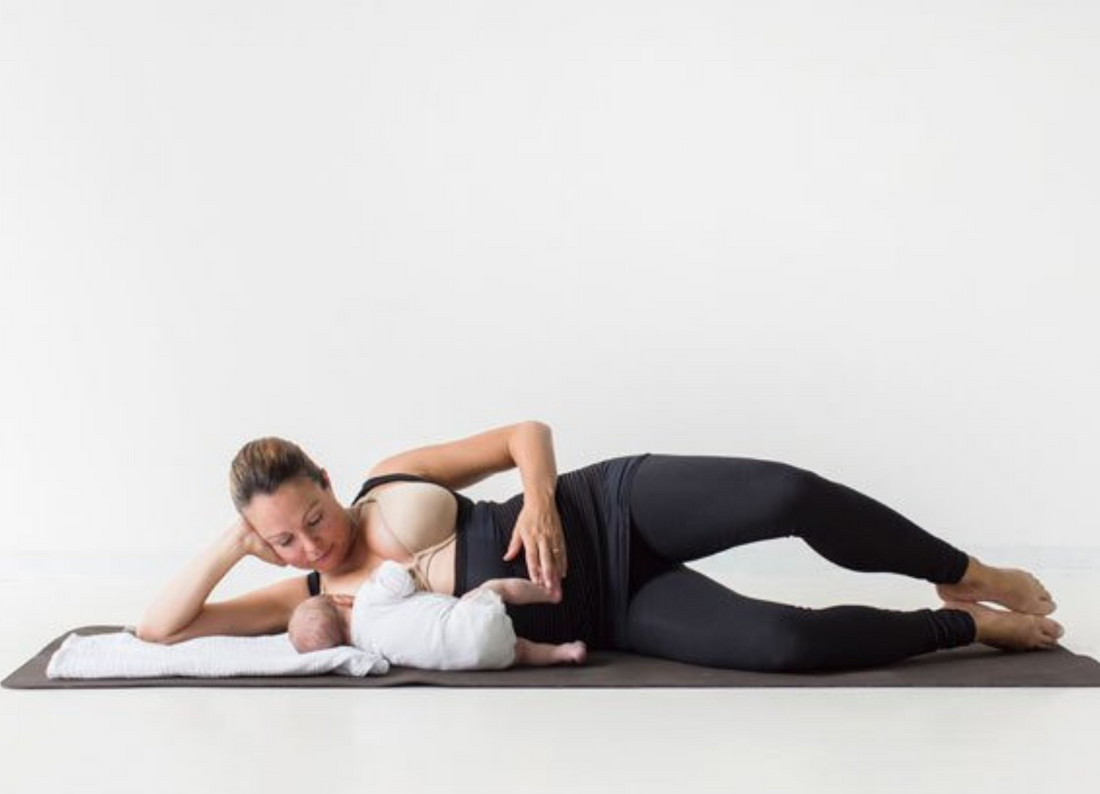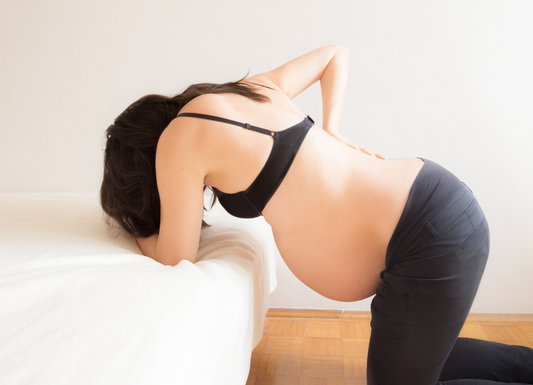Pregnancy and delivery can do quite a number on the human body. It’s definitely incredible to participate in the miracle of birth, but it’s also no picnic - just ask anyone who has gone through it!
Bouncing back from childbirth can be a long process, but it’s one that you can plan and prepare for. Recovering from pregnancy and birth starts while you are still pregnant. Preparing ahead of time means planning to have the support you need as you recover and heal. My favorite postpartum recovery strategy (technically, I guess it’s two strategies) is belly wrapping, sometimes called postpartum belly binding, and core retraining exercise.
The goal is to minimize the impact of diastasis recti and avoid lingering postpartum core dysfunction through the use of belly binding – a topic that is rarely talked about until there is a problem and then many women find themselves asking, “Why didn’t anyone tell me about this?”
Research is now showing that pretty much every woman will have some degree of diastasis recti during or after pregnancy. And studies also show that the first 8 weeks after your baby is born is when any spontaneous healing of the abdominal wall occurs—and belly binding can promote this healing.
After that first eight weeks has passed, change can be made by ensuring you exercise your abdominal muscles and working with a physical therapist specializing in this realm. However, if you’re still pregnant or within those first eight weeks, I believe in harnessing the spontaneous healing time with core support from a belly bind and retraining. By combining these two things, women are often better off and more likely to return to optimal core function.
Women have told me, and I have experienced myself, that right after your baby is born there is a huge void between the rib cage and the pelvis, along with an overwhelming sense of instability. I remember having felt the need to hold my belly together as I moved.
And when you think about what your body just experienced, it’s no wonder!
The muscles and tissues in the abdominal wall and pelvis (that typically contribute to our core control) stretch well beyond their optimal length in pregnancy and birth. This can affect their ability to create tension and generate support.
Belly binding is like a gentle hug to your pelvis and lower abdomen. A traditional belly bind provides external support while internal support is rebuilt in your postpartum belly with restorative exercise.
Once you have that external support from belly binding, the key to restoring form and function is retraining the core and many recommend you achieve that via the pelvic floor. Belly wraps support the pelvis so that the overstretched muscles have a bit of assistance in the early weeks postpartum.
The abdominal wall and pelvic floor are intimately connected through muscles and connective tissue and need to work together for optimal core function.
52% of women with pelvic floor dysfunction have diastasis recti so, by restoring the abdominal wall through a belly bind we are also aiding in the restoration of the pelvic floor. We can’t overlook how closely they are connected.
Form and force closure
The muscles and connective tissue in our core are key with regards to stability and control in our inner core and so are the bones and joints. In the pelvis, the shape of the bones provides what is called ‘form closure’ while the muscles, ligaments and connective tissue contribute to what is called ‘force closure’.
During pregnancy, biomechanical changes occur which can reduce the effectiveness of both form and force closure, such as:
- Altered posture and load bearing.
- Altered muscle length in the pelvic floor and abdomen (both longer and shorter) which results in a reduced ability for muscle force production.
- Reduced muscular coordination.
- The role of relaxin and progesterone is to increase the extensibility of the ligaments and smooth muscle to allow the pelvis to expand more readily for the delivery of the baby. When the ligaments are lax it affects the force closure.
- The abdominal muscles are stretched to allow space for the enlarging uterus, which can lead to loss of muscle tone and strength in the abdominal region and a compromised ability to produce tension in the thoracolumbar fascia, resulting in reduced force closure in the pelvis.
- Diastasis recti is a distortion in the abdominal wall and it impairs the function of the muscles including their role in posture and pelvic stability.
- The transversus abdominis, multifidus, diaphragm and the pelvic floor are all anticipatory muscles of the core and are required for force closure to the pelvis – all are affected by posture and alignment changes, hyper- and hypotonicity in the muscles and potential tissue injury from the birth itself.
Belly binding immediately postpartum for up to 8 weeks will help provide form closure, while force closure is rebuilt through restorative exercise. Think of belly binding like a crutch after you have sprained your ankle. A belly bind is meant to provide some support and stability when the body’s ability to do so is compromised.
The importance of rest, healing, nurturing the mother and closing the body after it ‘opened’ for birth is essentially undisputed by birth professionals. Belly binding or wrapping is an essential support element of postpartum recovery and a beautifully supportive tradition we hope more women will embrace.
Our Bellies Inc Ab System was designed with prevention in mind and is based on the traditional practices of belly binding, or belly wrapping, that are part of mother roasting rituals in countries like Mexico, Malaysia, Indonesia and Japan.
The aim of the Ab System is to help women prepare, recover and restore their body through belly binding and beyond. It includes:
- Prenatal core exercises to prepare for birth
- The Ab Wrap belly binding postpartum wrap to help support the core in the early weeks postpartum, and
- An 8-week online restorative exercise program to help retrain the inner core unit.
We advise that the belly binding be put on from the bottom up and around the pelvis and lower abdomen as opposed to the waist. This helps avoid creating downward pressure on the pelvic floor while you belly bind.
As always, check with your obstetrician and/or other medical professional before beginning to use a belly bind. You never know what a positive difference it could make in your recovery!



